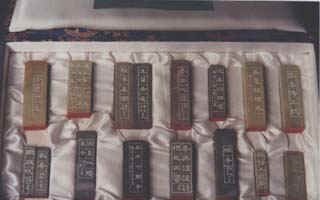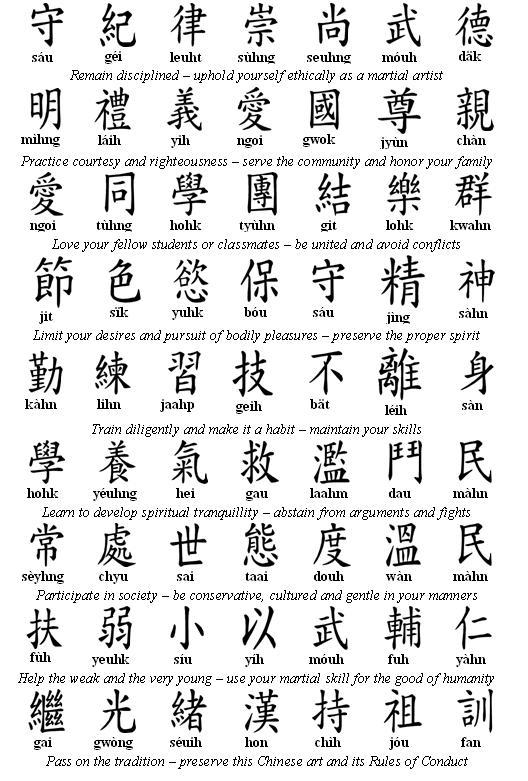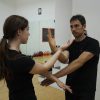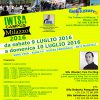THE MOTTOS
Principles about the Use of Force
- Get rid of your Strength 捨拙力-捨棄不必要之力量
- Get rid of your opponent's Force 卸來力-卸減他人來攻的力量
- Return your opponent's Strength 借他力-來留去送
- Add your strength to his 施巧勁-甩手直衝
Principles of Action
- If the road is clear, advances 問路尋橋手先行
- If it is not free, glued to the opponent 手黐手,無訂(地方)走
- If the opponent moves forward, surrenders 用巧勁,避拙力-即借力
- If the opponent retreats, follow him 迫步追形
About Siu Nim Tau
- Push your head up and feet on the ground
- Head straight and horizontal gaze
- Chest which can store and back straight
- Open abdomen and pelvis in
- Elbows and shoulders low sunk
- Always look where you go hands
- If you can not even master a "little idea" , you can never do anything properly: it is in the practice of Wing Tsun and in life everyday
- Take strength from the point of the elbow
About Chum Kiu
- Defend and attack simultaneously
- Move both hands together
- Coordinate steps and movements of arms
- Generating energy through the 7 joints
- When defending, the body moves, the elbow does not move, the elbow moves, the body does not move. When you attack, body and elbow move together
- Practicing the whole shape in space it takes for a cow to lie down
- Be firm as a rock
About Biu Tze
- Biu Tze does not leave the school
- Hit thanks to the strength of the opponent
- Perform an attack rather than defending
- Killing 1000 opponents coast 3000 of your men
- Fight and fast decisions
- The force must penetrate in the fingers
About Chi Sau – Lat Sau
- Principles to be followed during Chi Sao:
1. Jon → Carefully
2. Fai → Quickly
3. Haut → Aggressively
4. Chung → Vigorously - Everyone wants to prevail over the other
- A target, two thoughts
- Trapping two arms with one
- Be careful when using an internal pak sao
- The greater the pressure, the stronger the resistance of the spring
- As the pressure, the faster the return of spring pushed faster is removed
- If your arm is left free, run it forward
- More complicated are the movements, the more time it takes to execute them
- Never leave a single attack during a fight
- Give birth to all techniques from the center
- Do not turn unnecessarily, not stiffen; not oppose a strong pressure by brute force, not to compress the arms opponent with a superior force
- If it does not exploit the possibility of attack, gifts to your opponent that chance
- When the head is pressed down, the queue salt (nel Bong Sau)
- Boang Sau Muck Ting Lau. Fon Sau Ying Gun Chau (A bong must never remain. A "whipped" movement must immediately follow)
- Do not put yourself posing in Bong Sao
- It is difficult to keep the body in balance while maintaining a high posture, but it is equally difficult to move from a low position
About the practice of the Wing Tsun
- Each step must be clear
- No success without hard training
- Coordinates torso, arms and legs
- The movements must be fluid
- Apply the principle Yam and Yeung
- Deep breathing and spontaneous
- Boh Lay Tau, Meen Fa Toh, Teet Kiu Sau (Glass head, cotton body, iron forearms)
- The less is more
- Rock beneath, above water
About strategies
- Be quick with shots
- Put smoothness and elasticity in hits
- Choose the right time
- Protect Yourself in the attack
- Change by adapting harmoniously to the opponent changes
- Starting later, but get to hit the target before
- The attack is the best defense
- No pre-movement (encoded)
- Responding to an attack with an attack
- Avoid attacking the part of the opponent better defense, but attack the somewhat unprepared
- Hitting his head, no kick
- Violent attacks with thumping steps
- Attach a short distance focusing opponent
- Pay attention to both hands simultaneously
- Coordinate the work of legs and upper limbs attack and defend at the same time
- Be lightning in concluding the clash
- Tip of the opponent with the center line
- Do not use your weakness to fight against the strong point of your opponent
- The stronger your opponent, the harder it is to win in a prolonged clash
- Dissolving the shots by force borrowed
- For each attack must be a defense
- There is always something that dominates over another
- Use a vertical trajectory to intercept a horizontal trajectory
- Defeat an opponent with a single movement
- I learn with the Siu Nim Tao, I move with the Chum Kiu, I leave the space for the Biu Tze
About distances
- A straight line is the shortest distance between two points
- The more you can stay close to your opponent, the harder it is for him to use kicks
- No one can hit by itself with a hook
- While others move along the arc, we move along the bowstring
- Three arms, one leg (N.d.R. two arms and elbows (1/2 arm) makes three arms)
- The arms are long, short elbows
- The longer the distance, the longer it takes to move from one point to another
- Nothing hand - nothing foot
THE CODE OF CONDUCT
The following is the code of conduct affected the so-called tables of Wing Tsun. These are the tablets of stone inscribed by Moy Yat behest of his master, Ip Man. The Grand Master, in fact, to properly perpetuate the mottos of Wing Tsun in a simple but complete, he decided to create a written document, engraved on the stone.
Ip Man had engraved his Todai Moy Yat Kuen Kuit of the Wing Tsun on these slabs of stone, still preserved in the museum dedicated to the same Ip Man. Moy Yat was an artist specializing in the creation of sculptures and seals and immediately accepted the assignment .
When we speak of the tables we must refer to less than 51 different kinds of stone, carved in 51 different styles. They were employed three years to find and select the stones to be used and an additional three years to carve them. They were displayed in four specially constructed containers.
The stones contain the mottos and the genealogy of the Grand Masters, from the founder Yim Wing Chun until Ip Man. They are engraved with the basic system training levels (Siu Nim Tau, Chum Kiu, Biu Tze, Muk Yan Jong, Luk Dim Boon Kwan and Bart Cham Dao).
On the death of Ip Man, the Wing Tsun Tables returned to Moy Yat. The latter made accessible giving it to the museum in which today are still exposed. The following is the code of conduct that our Ip Man wanted to entrust us.

1. Always be disciplined. Grow ethically as a martial artist. (Sáu Géi Leuht Sùhng Seuhng Móuh Däk)
2. Practice the way of courtesy and fairness. Serve the community and honor your family. (Mìhng Láih Yih Ngoi Gwok Jyùn Chàn)
3. Love your brothers and fellow practitioners. Be united and avoid conflicts. (Ngoi Tùhng Hohk Tyùhn Git Lohk Kwahn)
4. Limit your desires and lust for pleasures of the body. Preserves always the right spirit. (Jit Sïk Yuhk Bóu Sáu Jìng Sàhn)
5. Train diligently and make it a habit. Keep your quality constant. (Kàhn Lihn Jaahp Geih Bät Léih Sàn)
6. Learn to develop spiritual tranquility. Abstain from arguments and fights. (Hohk Yéuhng Hei Gau Laahm Dau Màhn)
7. Take part in society. Be prudent, cultured and gentle manners. (Sèyhng Chyu Sai Taai Douh Wàn Màhn)
8. It helps the weak and children. Use your martial skills for the good of humanity. (Fùh Yeuhk Síu Yíh Móuh Fuh Yàhn)
9. Transmit the tradition. Preserve this Chinese art and its rules of conduct. (Gai Gwòng Séuih Hon Chìh Jóu Fan)
N.B.: The phonetic translation is Cantonese, not Mandarin Chinese.



